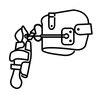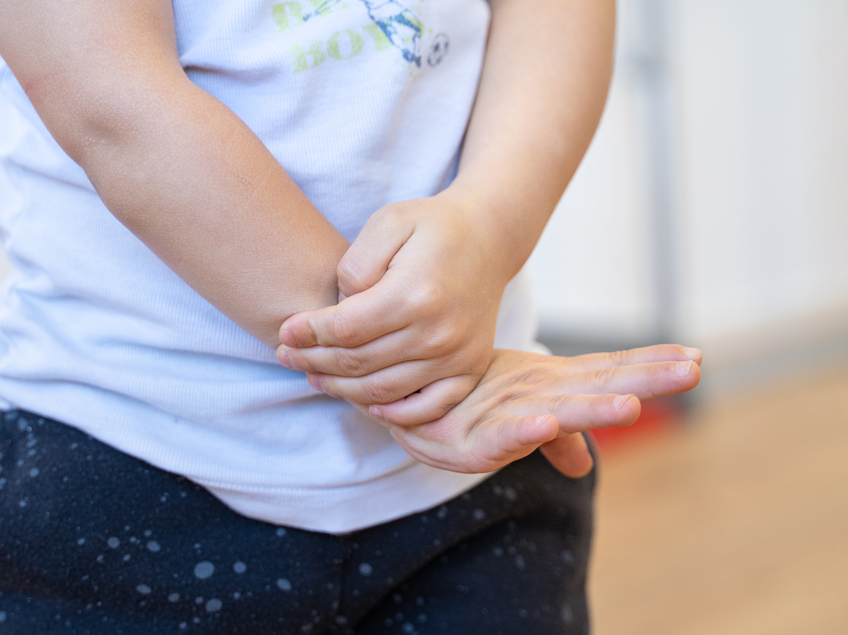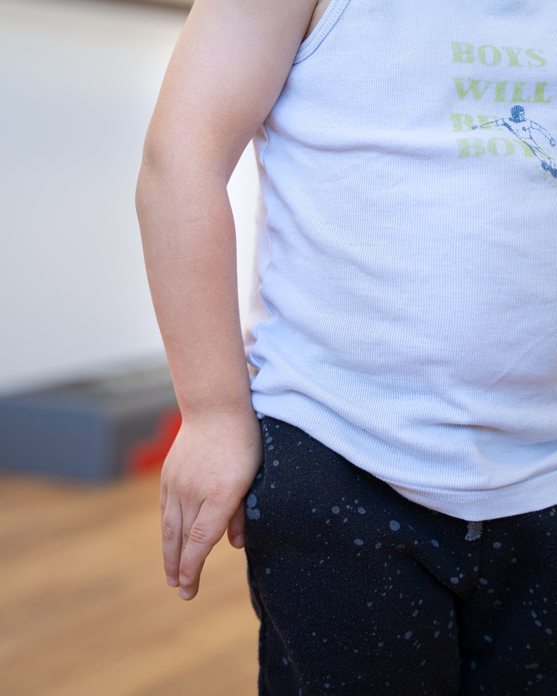
The Concept 4D orthosis is a dynamic corrective positioning orthosis used after obstetric brachial plexus palsy (OBPP).
On our YouTube channel you can find exciting personal stories of our patients!
Self-help groups, user meetings, trade journals: Get to know people who feel the same way you do!

Arm paralysis caused by injured nerves
Obstetric brachial plexus palsy (OBPP)
Nerves connect the brain with the body or muscles and send important information back and forth. If the nerves have been injured, for example during childbirth, this subsequently affects the child's muscles. The messages sent by the brain no longer reach the muscles in full.
Basically, the arm is supplied by the nerve plexus "plexus brachialis". The nerves run from the cervical spine through the shoulder to the upper and lower arm and are responsible for allowing the arm to move and feel. After an obstetric brachial plexus palsy (also Erb's or Klumpke's palsy, brachial plexus injury), these nerves are injured, which in turn affects the musculature and sense of touch.

Let yourself be inspired! We accompany many interesting patients during their Pohlig appointment and give you personal insights.

For those who want to delve even deeper into the matter, we have a suitable video for almost every supply area.

Take a look behind the scenes at Pohlig and find out about diagnoses and our innovative aid solutions!
Traumatic birth injury
Causes & consequences of brachial plexus birth palsy
But what is the cause of an obstetric brachial plexus palsy? Basically, plexus injury is caused by serious accidents in which the nerves in the shoulder joint are massively overstretched and can partially tear. If these injuries happen during birth, it is called obstetric brachial plexus palsy, which results in paralysis of the arm nerves. Brachial plexus birth palsy occurs in approximately one in every thousand births. Risk factors include:
- shoulder dystocia (during birth, the baby's shoulder gets stuck in the mother's pelvis, causing birth arrest)
- macrosomia (birth weight over 4 kg)
- maternal obesity (especially in cases of diabetes mellitus or gestational diabetes)
- foeto-maternal disproportion (disproportion between mother and fetus)
- breech birth
Mild obstetric brachial plexus palsy may heal on its own within a few weeks. If, on the other hand, the nerves are severely overstretched, the result is limited mobility, lack of strength and low sensitivity in the arm.
Everyday things, such as tying shoes, putting on a sweater or cutting bread, can become a challenge for children with plexus palsy.
Typical symptoms of obstetric brachial plexus palsy are:
- malpositions at the shoulder (internal rotation malposition)
- malpositions at the elbow/forearm (supination or pronation malposition of the forearm)
- a drop hand (flaccid drooping of the hand)
- a collapsed thumb.
Physiotherapeutic, orthopedic and surgical therapy options exist for each individual or combination of these movement changes and maldevelopments.
Orthotic treatment is recommended for rest periods - especially nighttime bed rest. An orthosis includes static and dynamic positioning elements, promotes joint correction and counteracts muscle imbalance as best as possible, among other things.
Surgery? Physiotherapy? Orthosis?
Therapy of obstetric brachial plexus palsy
In obstetric brachial plexus palsy, the extent of paralysis can usually be prognostically assessed in the course of the first 3-9 months of life. Many plexus injuries can be treated well if they are treated conservatively or surgically in the affected child in time.
Regular physical and occupational therapy aims to strengthen the arm and stretch it. In this way, one tries to prevent it from becoming stiff and painful. It is also important to use the arm as much as possible in everyday life (e.g., swimming, climbing, or doing crafts) to combat functional impairment.
In some cases, the function of the arm can be improved by surgery. For example, reconstruction of the brachial plexus, or severed nerve cords, is possible. Redirecting healthy nerves to nerves of other essential muscles is also one of the common therapies (neurotization).
In cooperation with Dr. med. Jörg Bahm (Head of Plexus Surgery at the University Hospital RWTH Aachen) we were able to develop an orthosis which can be used as a result of a obstetric brachial plexus palsy.


The Concept 4D orthosis is individually adapted to the child and provides dynamic corrective positioning of the upper extremity in four dimensions or planes of movement:
- It positions the shoulder in the best possible external rotation with the upper arm applied (adduction)
- It corrects the supination or pronation malposition in the forearm statically or dynamically
- It allows free elbow flexion in the orthosis
- If necessary, it statically supports a drop hand with lateral deviations (ulnar deviation) and a collapsed thumb.
Which orthosis helps with obstetric brachial plexus palsy?
Concept 4D orthosis
![]()
Learn more about the 3D printed dynamic orthosis that we have developed especially for children with plexus injury!

